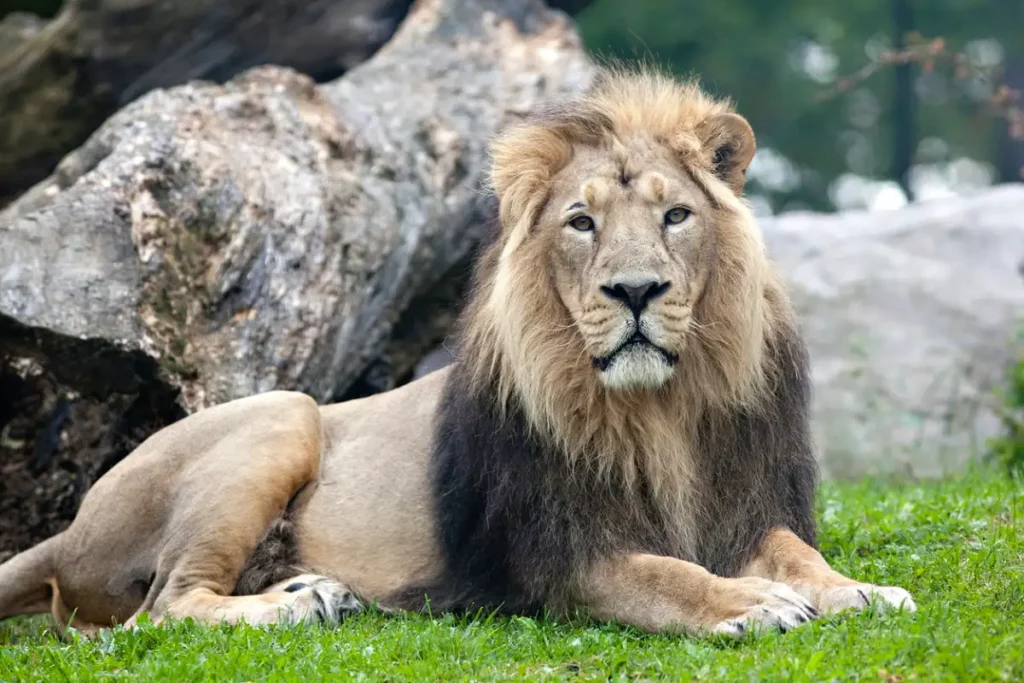Asiatic Lion Population in Gujarat Rises to 891: A Remarkable Conservation Success Story
In a promising development for wildlife conservation, the population of the endangered Asiatic lion in Gujarat has seen a significant rise over the past five years. According to the latest census, the number of these majestic big cats has increased from 674 in 2020 to an impressive 891 in 2024 — a growth of nearly 32%. This achievement reflects the dedicated conservation efforts by forest officials, local communities, and the Gujarat state government.

The Only Wild Home of the Asiatic Lion
Gujarat’s Gir Forest National Park and its surrounding regions are the last remaining natural habitat of the Asiatic lion (Panthera leo persica). Unlike their African cousins, Asiatic lions are slightly smaller and known for their unique physical features, such as a less developed mane and a distinctive fold of skin along their bellies.
Historically, Asiatic lions once roamed large parts of the Middle East and northern India. However, rampant hunting and habitat loss led to their near extinction. By the early 20th century, only a dozen lions remained in the Gir region. Their revival is one of India’s most remarkable wildlife conservation success stories.
The 2024 Lion Census: What the Numbers Say
The lion census, conducted using the Poonam Avlokan method, involved over 2,000 personnel, including forest officers, guards, and volunteers. This technique uses direct sightings and physical observations conducted during a full moon period when lions are more likely to be out in the open.
The new count revealed:
- Total lions: 891 (up from 674 in 2020)
- Male lions: 162
- Female lions: 325
- Cubs and sub-adults: 404
This jump of 217 lions over five years is a sign that breeding conditions are favorable and that the environment remains supportive of the species’ long-term survival.
Why the Rise Matters
The increase in the Asiatic lion population is not just a matter of numbers. It’s an indicator that conservation strategies are working — from anti-poaching measures and improved habitat management to community engagement and scientific monitoring.
“Such a growth is very encouraging. It means our coordinated efforts, including surveillance, healthcare, and the protection of wildlife corridors, are making a tangible difference,” said a senior forest department official.
Moreover, the rise shows that the lions are now spreading to new territories beyond Gir. Several lions have been spotted in areas like Amreli, Bhavnagar, and Junagadh, which reflects healthy dispersion and ecosystem balance. However, this also presents new challenges in managing human-wildlife interactions.
Conservation Initiatives Behind the Growth
Several key initiatives have contributed to the thriving population of Asiatic lions in Gujarat:
- Habitat Expansion: Forest authorities have expanded protected areas and created safe corridors for lion movement.
- Water and Prey Availability: Development of water points and efforts to increase the population of prey animals like deer, antelopes, and wild boars have ensured a stable food chain.
- Community Involvement: Villagers living in lion territory are regularly engaged and educated on coexistence practices. Many even take pride in sharing space with the lions.
- Technology Integration: Use of camera traps, drone surveillance, and GPS tracking has improved lion monitoring and helped prevent poaching or human conflict.
Challenges on the Horizon
While the population growth is a reason to celebrate, it also highlights some concerns. With almost 900 lions living in and around the Gir region, issues like overcrowding, disease outbreaks, and shrinking forest space are becoming increasingly serious.
Experts have pointed out the need to establish a second habitat for the Asiatic lions outside Gujarat to reduce the risk of losing the entire population to a single epidemic or disaster. The long-pending plan to relocate some lions to the Kuno National Park in Madhya Pradesh has yet to be implemented due to legal and political hurdles.
Additionally, as lions venture outside forest areas into agricultural lands and villages, incidents of human-lion conflict have increased. Livestock killings and occasional attacks have been reported, although the government compensates for losses. Managing this delicate balance between conservation and human safety remains crucial.
A National Symbol of Wildlife Recovery
The resurgence of the Asiatic lion has become a symbol of India’s broader wildlife conservation commitment. Alongside tigers, elephants, and leopards, the Asiatic lion holds an iconic status in Indian culture and biodiversity.
Prime Minister Narendra Modi, who hails from Gujarat, has often highlighted the importance of lion conservation. The “Asiatic Lion Project” launched by the Centre in 2020 with ₹97.85 crore funding has provided a big boost for scientific management, disease control, and rescue infrastructure.
Conclusion: A Roaring Future Ahead?
The rise in the Asiatic lion population in Gujarat is undoubtedly a milestone worth celebrating. It showcases what consistent effort, public support, and science-backed policy can achieve when it comes to saving a species from the brink of extinction.
However, the journey is far from over. With growing numbers come growing responsibilities — to ensure adequate space, genetic diversity, and safe environments for these lions to flourish. Continued investments in habitat protection, conflict resolution, and interstate cooperation will be essential in securing a sustainable future for the king of Gir.
As the roar of the Asiatic lion grows louder, it echoes a message of hope — not just for one species, but for the entire movement of wildlife conservation in India.






